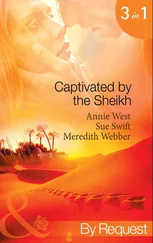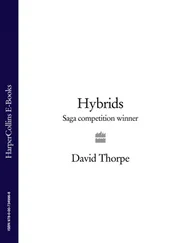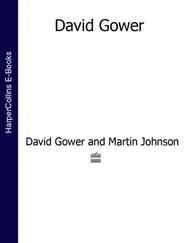I continued with a piece on location in a clear-cut on Talunkwan Island, not far from Lyell Island, where logging was speeding along:
There's nothing subtle about logging. It's the application of brute strength to efficiently clear large tracts of land. This is Talunkwan Island across from Windy Bay. Ten years ago, it was covered in forest just like Lyell Island. Then it was logged. It'll be a long time before the land recovers. We often hear of “harvesting” trees, but in areas like this, you can't farm a forest the way you do corn or tomatoes. The topsoil takes thousands of years to build up and the population of trees changes slowly over long periods of time. Now the thin layer of soil is exposed to easy runoff — and it rains a lot here. No one can say what these hills will look like in a hundred years, but you can be sure the forests will look nothing like the ones that once were here.
At the end of the program, this was my conclusion:
The Queen Charlotte Islands are at the outer edge of the west coast, a unique setting where we can be transported back to prehistoric times when only natural laws prevailed. It took thousands of years and countless seeds and seedlings before giant trees like those at Windy Bay took root and survived. Many of them are more than six hundred years old. Once it took two men weeks to cut one of them down — today one man can do it in minutes. Is this progress? Wilderness preserves are more than just museums for relics of the past, they're a hedge against our ignorance, a tiny reserve from which we might learn how to use our powerful technologies more wisely. But in the end, our sense of awe and wonder in places like this changes us and our perspective of time and our place in the nature of things.
I have often been accused by vested-interest groups like loggers and forest company executives of being biased in my reporting. Viewed through their perspectives of immediate jobs and profit, my statements may seem slanted, but nature and so many other values are ignored by the lenses of such priorities. I believe a huge problem we face today is the overwhelming bias of the popular media that equates economic growth with progress.
For the program I interviewed Tom McMillan, then federal minister of the environment; environmentalist Thom Henley; Bill Dumont, with Western Forest Products Limited; forester Keith Moore; Nick Gessler; Bristol Foster; traditional Haida Diane Brown; Miles Richardson, then president of the Haida Nation; and Guujaaw, a young Haida artist and carver. Ruggedly handsome, long hair loosely braided, a twinkle in his eye so you never knew whether he was serious or kidding, Guujaaw changed the way I viewed the world and set me on a radically different course of environmentalism.
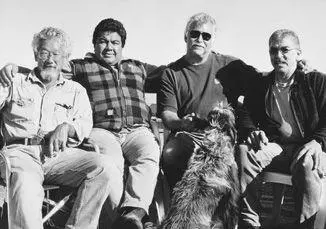
The Big Four on Haida Gwaii — me, Miles Richardson, Jim Fulton, and Alfie Collinson
I knew that unemployment in Skidegate and Masset, the two Haida communities, was very high, that some of the loggers were Haida, and that the non-Haida forest workers often spent money in the two communities. If economic opportunities were desperately needed, one would think the Haida would welcome forest companies; yet Guujaaw had been a leader in opposing logging. When I asked him why, he answered, “Our people have determined that Windy Bay and other areas must be left in their natural condition so that we can keep our identity and pass it on to following generations. The forests, those oceans, are what keep us as Haida people today.”
Windy Bay, forests, and oceans were critical to Haida identity? This was a statement of a fundamentally different relationship with the “environment” than most of us have, a sense that we are where we live, a relationship that is essential to future generations for whom present Haida people feel a responsibility. I wondered how many executives of forest companies — or of any company for that matter — would consider future generations a fundamental part of their planning and actions.
I continued my interview: “So if the trees are logged off—” Before I could finish my question, he responded, “If they're logged off, we'll probably end up the same as everyone else, I guess.”
“The same as everyone else”—such a simple statement, yet so deeply significant. It was only days later, while I was watching the rushes, that I recognized the enormity of this insight. Since then, Guujaaw has confirmed that my interpretation of his remarks is correct: Haida people do not think they end at their skin or fingertips. Guujaaw opened for me a window into a radically different way of seeing the world. As I reflected on his words, it became obvious that these words are true for me and for all of us.
If we looked at another person with a machine that registers temperatures in different colors, we would see a gradient of heat exuding from her body into her surroundings. Water vapor and tiny electromagnetic emissions also fan out from any body while we exchange oxygen and carbon dioxide with plants on land and in water. Each of us is connected to our surroundings, just as the Haida see that the air, water, trees, fish, and birds of their land make them who they are. Talk to most Haida and within a few minutes it becomes clear that Haida Gwaii, “Island of the People,” the islands they consider home, not only embody their history and culture but also are the very definition of who they are and why they are special and different.
Miles Richardson once told me about a meeting of the Fourth World Wilderness Congress, held in Colorado and attended by delegates from fifty-five countries and indigenous representatives from around the world. Miles was there for his expertise in aboriginal politics. One evening, he found himself in a circle with other First Nations representatives, including some elders. He was lamenting that the Haida had lost so many of their ceremonies and cultural traditions, as well as their language. An elder sitting next to him, who Miles had thought was snoozing, lifted his head and remarked: “You know those ceremonies, those songs, those traditions you're talking about — they haven't gone anywhere. They're in the same place your forefathers found them. They're in the forests, they're in the ocean, they're in the birds, they're in the four-leggeds. You've just forgotten how to listen. I have a suggestion — before you take another step forward [meaning, do more politicking], take a step back and remember how to listen.” Miles was tremendously moved by this and says he hardly said a word for the next three days.
My grandparents, like most newcomers to North America over the past five centuries, arrived with a very different attitude to the land. To them, Canada was a totally alien country. Many earlier immigrants survived only because of the knowledge and generosity of the aboriginal people. The attraction of North America may have been freedom from the tyranny of church or despots, opportunity in a resource-rich region, land for farming, ranching, mining, or other development. But most of those immigrants were incapable of learning from the aboriginal people or the indigenous flora and fauna because they lacked the respect to watch, listen, and learn from them. Instead, they attempted to “make over” the land to what was familiar, bringing their domesticated plants and animals, clearing the land of its native forests and prairies, draining wetlands, straightening or damming rivers, and dumping wastes without a thought. And once they were established, they attempted to remove the indigenous people by killing them or forcing them to abandon their languages, culture, and values to become Canadians.
The Nature of Things with David Suzuki program on Windy Bay was broadcast in 1982 to a large audience and elicited more letters in response than any other show in the series since its inception in 1960. After the program had run, the South Moresby Resource Planning Team reached the same conclusion as the committee before it — Windy Bay, a jewel set in the misty isles, had to be protected from logging.
Читать дальше
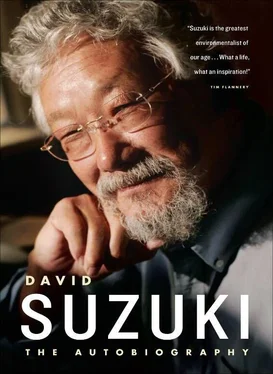

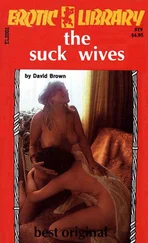
![David Jagusson - Devot & Anal [Hardcore BDSM]](/books/485905/david-jagusson-devot-anal-hardcore-bdsm-thumb.webp)




